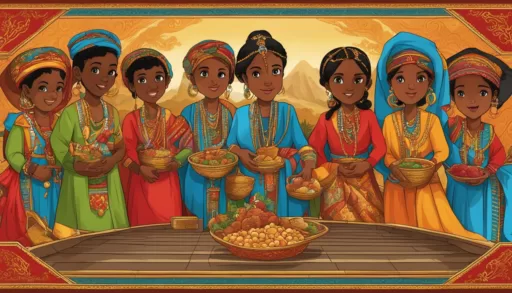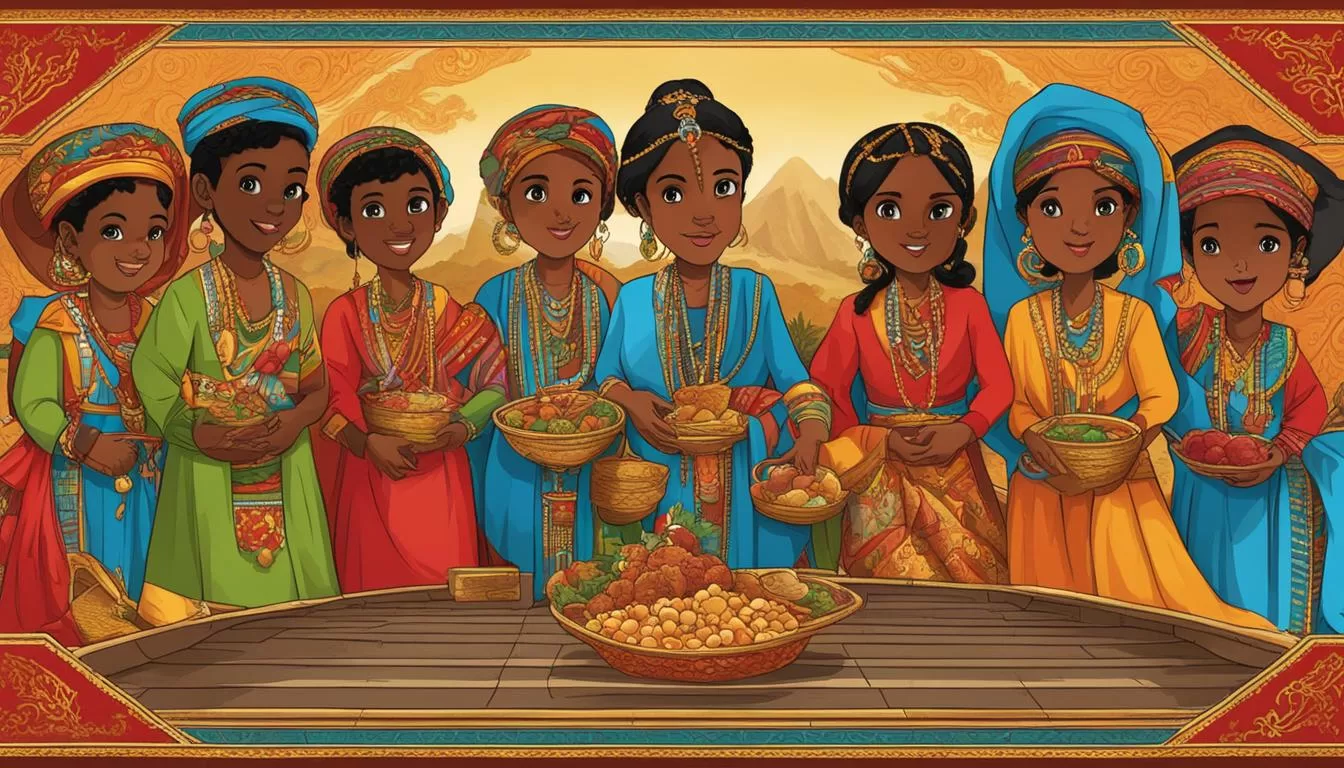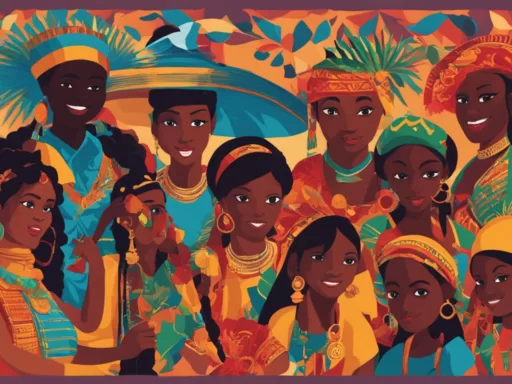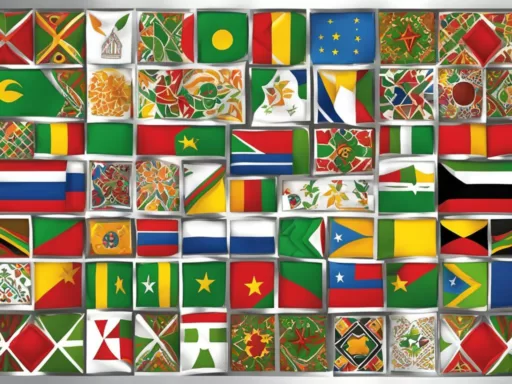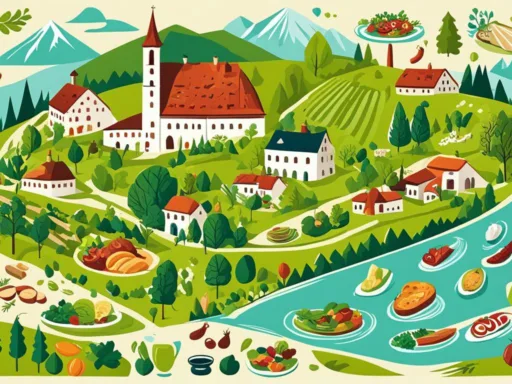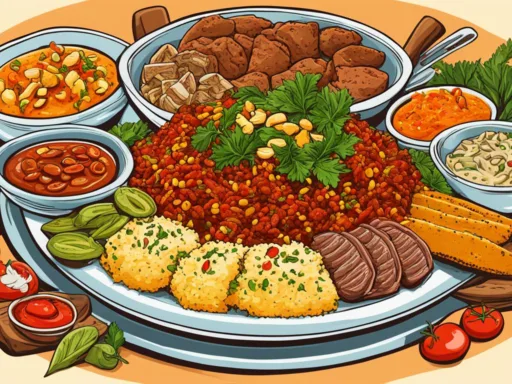Standing at the crossroads of cultures and continents, Eritrea is a beacon of linguistic diversity. The languages spoken in Eritrea form a compelling mosaic, representing the country’s multi-ethnic panorama. At the heart of this linguistic array lies Tigrinya, the language with the widest reach, painting the everyday life of the Eritrean people. Alongside, a harmonious blend of Tigre, Kunama, Bilen, Nara, Saho, Afar, and Beja contributes to the country’s rich verbal tapestry. Foreign languages, shaped by historical ties and contemporary needs, further enhance the country’s linguistic landscape. English, Arabic, and relics of Italian provide a link to global commerce, education, and Eritrea’s past.
The Eritrean Sign Language ensures inclusivity even for the deaf community, reflecting a thorough acknowledgment of language as a fundamental aspect of diverse communication. Compiled within an Eritrean language list, the depth and breadth of Eritrean linguistic diversity are as fascinating as they are essential to understanding this nation’s soul.
Key Takeaways
- Eritrea boasts a vibrant linguistic diversity with multiple languages used across the nation.
- Tigrinya, Tigre, and a variety of other ethnic languages form the backbone of daily communication in Eritrea.
- Historically influenced foreign languages like English, Arabic, and Italian play significant roles in modern Eritrea.
- The presence of Eritrean Sign Language highlights the nation’s commitment to inclusivity in communication.
- Understanding the variety of languages spoken in Eritrea offers a deeper insight into the nation’s rich cultural fabric.
- Eritrean language policies reflect a balance between maintaining ethnic languages and integrating global linguistic trends.
- Language serves as a living bridge connecting Eritrea’s historical past and its progressive present.
The Linguistic Landscape of Eritrea
The Eritrean language diversity is as arresting as it is integral to the identity of this vibrant nation. With an astonishing spectrum of languages, Eritrea stands as a testament to the resilient spirit of its people and their rich cultural heritage. The language context is vital for understanding the nation’s unique social fabric, with each tongue providing a window into the various Eritrean ethnic groups that form the country’s population.
Official Languages and Primary Ethnic Groups
Anchoring the linguistic landscape are the official languages Eritrea recognizes: Tigrinya, Arabic, and English. Representing more than just means of communication, these languages construct avenues of cultural exchange and administrative conduct. The dominant language, Tigrinya, links the majority of the Eritrean people, whereas Arabic and English serve as conduits to the broader international community. These languages do not stand alone but are the voice of a dynamic Eritrean ethnic tapestry, creating a mosaic nuanced by various dialects and accents.
Prevalence and Usage of Ethnic Languages in Eritrea
Within the shared spaces of towns and the countryside, one may hear the symphony of ethnic languages Eritrea resounds with. Be it the Afroasiatic cadences of Tigre, the Cushitic melodies of Afar, or the rhythmic intonations of Saho, each ethnic language enriches the country’s lexicon. These native languages of Eritrea, spoken by smaller contingents of the population, maintain the cultural integrity of each ethnic group while contributing to the collective national identity.
Historical Influences on Eritrean Language Diversity
Tracing the evolution of Eritrea’s linguistic diversity is akin to embarking on a journey through time. Rich historical dialogues have established the region as a confluence of Afroasiatic tongues. The historical linguistic influence Eritrea has absorbed affects not merely the structure of its languages but echoes within the very ethos maintained by the Eritrean populace. From the ancient Neolithic settlers to today’s global interactions, each epoch has left its indelible mark, weaving an intricate story within the country’s communicative threads.
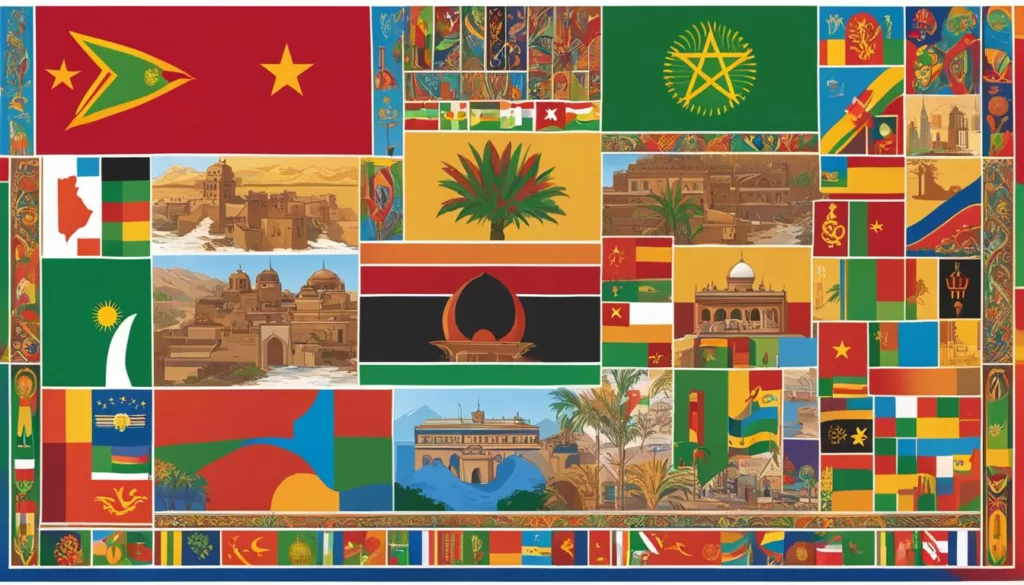
Highlighting the greater socio-cultural scenario, one finds that while Tigrinya, Tigre, and Dahlik serve as common tongues for the majority, numerous other ethnic languages continue to flourish. Below illuminates the language distribution amongst Eritrea’s ethnolinguistic landscape:
| Language | Speakers | Ethnic Group(s) |
|---|---|---|
| Tigrinya | Approx. 2.54 million | Tigrinya People |
| Tigre | Approx. 1.05 million | Tigre People |
| Dahlik | Approx. 2,500 | Dahlak Archipelago Residents |
| Saho | Approx. 191,000 | Saho People |
| Afar | Less than 100,000 | Afar People |
It is through the respect and preservation of its linguistic assets that Eritrea continues to foster a sense of unity and pride amongst its people. The nation’s polyphonic existence is not only a testament to its resilience and adaptability but also a beacon of cultural and linguistic prosperity.
Languages Spoken Eritrea: Core Languages Defined
Eritrea, a land woven with a rich fabric of languages, epitomizes cultural and linguistic diversity. At the heart of this landscape is Tigrinya, spoken by an overwhelming 70% of the population. It is not just a mode of communication, but a vital element of business and daily interactions throughout the country. Distinctly associated with the Tigrinya people, this language underpins the essence of Eritrean identity.
Moving beyond Tigrinya, we find Tigre, the chosen language of the Tigre people. With a significant speaker base, it coexists alongside Tigrinya, enriching the nation’s linguistic diversity. The borders of language further expand with the presence of Saho, primarily spoken by the aptly named Saho people, adding another layer to the nation’s language tapestry.
In the city of Keren lies the heartland of the Bilen community, where their unique tongue is spoken. Each of these languages, Tigrinya, Tigre, Saho and Bilen, tells a different story of the Eritrean saga. Meanwhile, languages like Kunama and Nara, though lesser-known, play a crucial part in the cultural mosaic of the nation. Their speech echoes the tales of ethnic minorities vital to the nation’s cultural plurality.
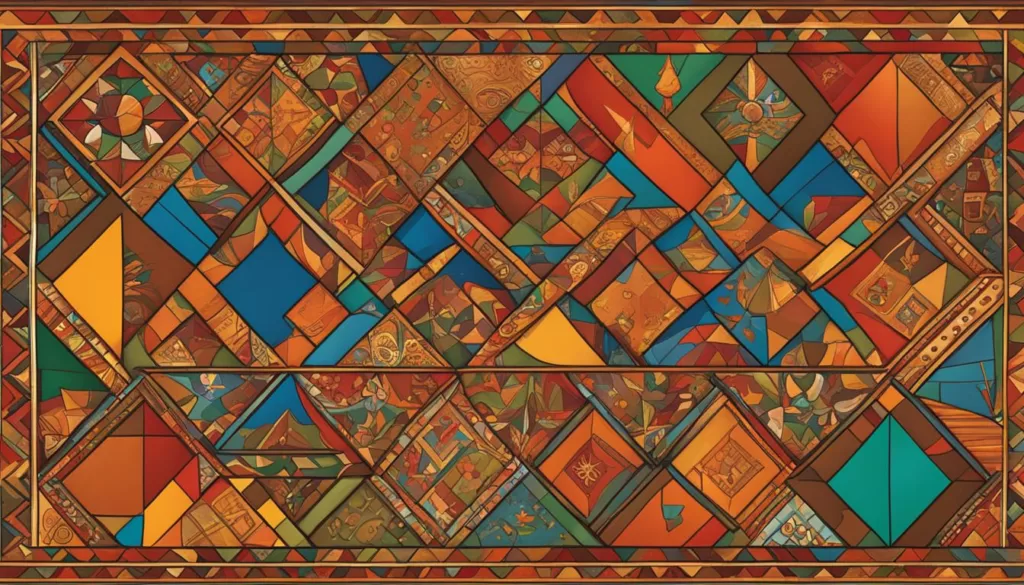
Furthermore, languages such as those spoken by the Rashaida, Afar, Beni Amir, and the Nera contribute to the symphony of sounds that is quintessentially Eritrean. Each of these languages, be they widely spread or limited to smaller communities, contributes to the collective identity of the nation — an identity that is persistently sung in multiple dialects and tongues.
The linguistic kaleidoscope of Eritrea not only adds to the nation’s ethnolinguistic wealth but also to its social fabric. Recognizing the languages’ intrinsic values, the Eritrean government celebrates their existence, ensuring each has its space to thrive within the broader collective.
- Tigrinya: The dominant language, commanding the socio-economic and cultural conversations of Eritrea.
- Tigre: A robust Afro-Asiatic legacy, nurturing the oral and societal traditions of the Tigre people.
- Saho: A Cushitic linguistic thread weaving through the tapestry of Eritrea’s diverse ethnic groups.
- Bilen: A Central Cushitic tongue resonating in the Anseba region, mirroring the Bilen people’s unique heritage.
- Kunama and Nara: Voices of Eritrean minorities carrying the ancestral wisdom of their tribes.
- Other significant languages, like those of the Rashaida, Afar, Beni Amir, and Nera minorities, enriching the national lexicon.
The linguistic canvas of Eritrea remains one of its most defining features, an emblem of its unity in diversity. Each language has carved out its niche within the nation, contributing to Eritrea’s story — a story that is narrated in many tongues but heard as one.
Colonial and Foreign Languages of Eritrea
Throughout its history, Eritrea has been a crucible of various cultures and languages, many of which have endured to this day. This segment delves into the lasting influence of colonial and foreign languages that have been woven into the nation’s complex linguistic fabric. We explore how colonial history has imprinted itself through language, leaving a legacy that persists in modern Eritrean society and contributes to its unique cultural identity.
The Legacy of Italian in Eritrean Society
Eritrea’s tryst with the Italian language is redolent of its colonial past under Italian rule. Today, the Italian language legacy Eritrea endures, primarily reflected in the older population and Italian-Eritreans who still converse in this romance language. While Italian’s use in daily life has waned since its zenith during colonial times, it surfaces intermittently in commerce and trade. Additionally, the influence of an Eritrean Pidgin Italian is illustrative of the lasting impact on local dialects and communication styles. The Italian language silently asserts itself as a historical artifact within the linguistic landscape of the country.
English and Arabic’s Role in Modern Eritrea
The English language Eritrea era commenced with the British Administration in the 1940s. Ascending quickly in importance, English evolved into the working language of Eritrea, particularly in education and government. Its prominence is apparent in the schooling system, where, from middle school onward, English is the lingua franca, shaping the educational trajectory of the nation’s youth.
In parallel, Arabic language Eritrea relations date back centuries due to trade, cultural exchange, and geographic proximity. The Arabic language has manifested predominantly in schools as Modern Standard Arabic, playing a pivotal educational role. Moreover, it flourishes as a native language among communities like the Rashaida, who also preserve their dialectal Arabic variants. Both English and Arabic serve as vanguards of Eritrea’s extensive interaction with the international sphere, cementing their roles in the country’s multilingual tapestry.
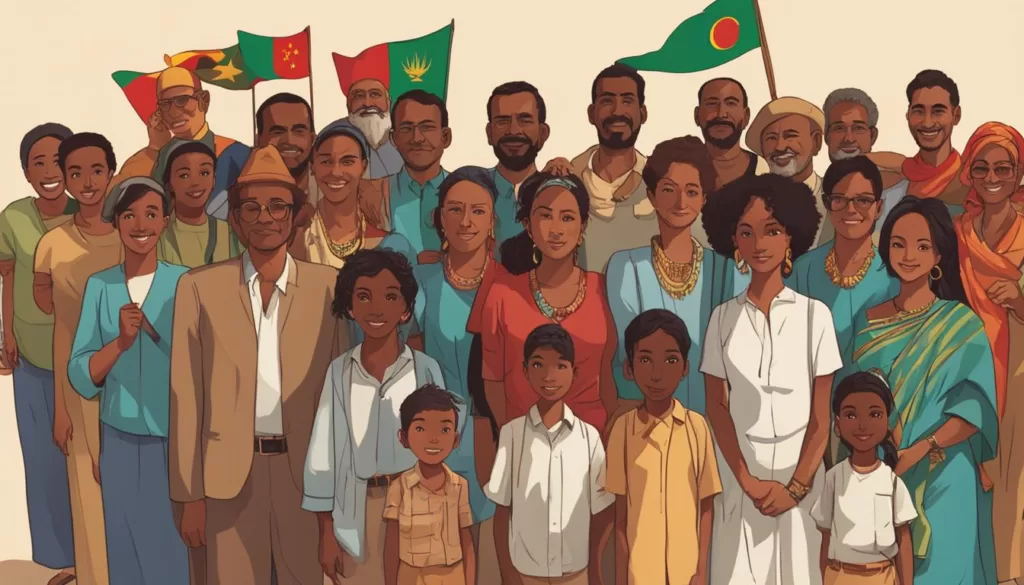
The interplay of Italian, English, and Arabic languages in Eritrea exemplifies the nation’s rich historical journey and its engagement with global languages. Each of these foreign tongues is indelibly part of the Eritrean experience, narrating stories of colonization, international governance, and modern global discourse. Collectively, they exemplify how languages serve as living chronicles of a nation’s past and present, co-creating the societal narrative with every conversation and transaction.
Eritrea’s Multilingual Education System
The cornerstone of Eritrean multilingual education lies within its inclusive approach to linguistic representation in the classroom. This educational language of Eritrea is designed to embrace the country’s rich linguistic heritage from a young age. Through the primary stages of schooling, children are immersed in their indigenous languages, reflecting the respect for cultural diversity that Eritrea upholds.
Yet, as students advance in grade level, they encounter the challenge of not only mastering their mother tongue but also of transitioning to English—a change intended to equip them for a globalized world. A vital aspect of this educational transect is the balance between using local ethnic languages and incorporating the English language as a medium of instruction from the pivotal sixth-grade threshold.
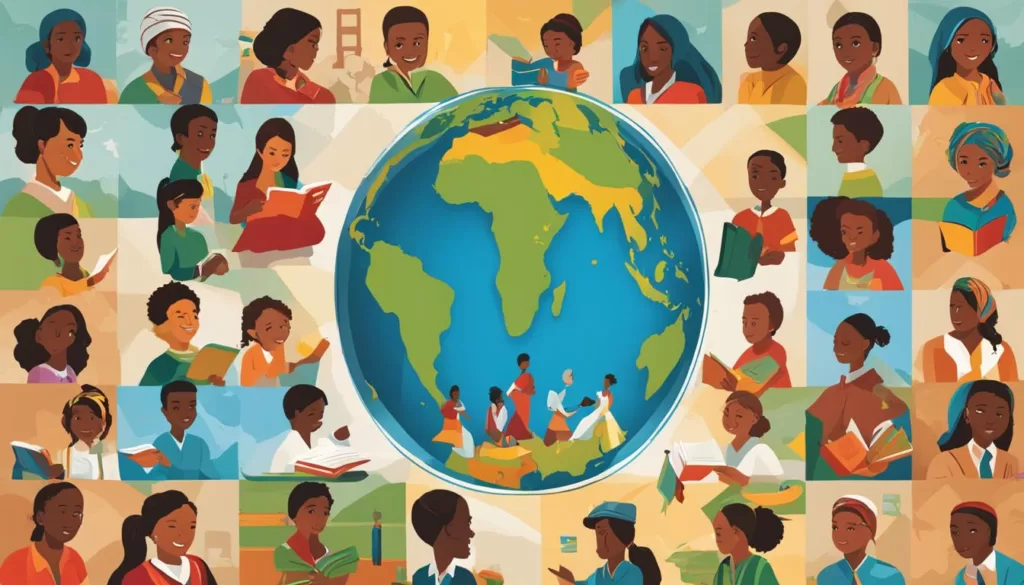
The drive behind this linguistic transition is to underline the significance of educational language Eritrea banks on for future generations. However, the reality of this educational philosophy is complex and multifaceted. An examination of this implementation showcases both proven success and the echoes of hardships in providing consistent, quality education.
- Free-of-charge instruction upholds the right to education for all Eritrean children.
- Primary education emphasizes linguistic representation by employing native languages predominantly.
- Theoretical transition to English highlights the complications arising from language shift dynamics in education.
- Challenges such as geographical disparities affect rural educational access and participation rates.
- Traditional gender roles question the parity and equality in girls’ enrollment and continuous attendance.
The table below portrays the linguistic inclinations of the Eritrean education system, manifesting the key demographic disparities and the consequent implications they have on the future landscape of Eritrea’s multilingual educational spectrum:
| Linguistic Factor | Impact on Education | Notable Trends |
|---|---|---|
| Native Language Instruction | Fosters cultural identity and eases early education | Predominance of Tigrinya in schools; limited resources for minority languages |
| English as Secondary Language | Introduces global lingua franca; potential for uneven proficiency levels | English favored post-primary; diverse proficiency among students due to language transition challenges |
| Rural vs. Urban Divide | Affects accessibility; remote areas less likely to have proficient English instructors | Rural lag in multilingual instruction quality; reliance on local languages persists |
| Gender Factors in Education | Influences girls’ educational opportunities; traditional views can restrict access | Lower female enrollment in areas with rigid gender roles; rural girls least likely to transition to English education |
The mandala of Eritrea’s educational language spectrum reflects an ongoing commitment to promoting multilingualism. Yet, it is within the nuances of implementation where the real measure of progress will be determined, ensuring that the promise of Eritrea’s rich linguistic tapestry is not just upheld, but flourished within the walls of its learning institutions.
Conclusion
In the final analysis, the common languages of Eritrea — Tigrinya, Tigre, and Arabic — are more than a means of communication; they’re the sinews binding the fabric of Eritrea’s society. The nation, with its mosaic of ethnic groups and languages, stands as a profound testament to human diversity and the capacity for cultural synthesis. This linguistic Eritrea summary has unveiled a panorama enriched by historical migrations, vibrant ethnic diversity, and a complex colonial past.
The Eritrean educational provisions reflect a conscious effort to maintain and nourish this diversity. Language is celebrated as a heritage and used as a tool for education, ensuring students remain tethered to their roots while they branch out into a globalized world. Such policies speak to a deep understanding of linguistic identity as a cornerstone of national pride and a bridge connecting individual localities to the collective experience.
As Eritrea continues to navigate the confluence of its many languages, the nation’s story, interwoven with traditions, cultures, and tongues, remains dynamically Eritrean. It is, without doubt, that these shared sounds and symbols will carry the country’s distinctive voice into the future, marking its continued place as a colorful thread in the tapestry of the Horn of Africa.
FAQ
What languages are spoken in Eritrea?
Eritrea is a multilingual country with a range of languages spoken across its regions. Tigrinya, Tigre, Kunama, Bilen, Nara, Saho, Afar, and Beja are the most commonly spoken ethnic languages. Tigrinya is the most prevalent language and serves as the de facto language of national identity. Other important languages include English, Arabic, and Italian, and for the deaf community, the Eritrean Sign Language is also used.
Are there any official languages in Eritrea?
While Eritrea does not have an official language designated in the constitution, Tigrinya and Arabic serve as de facto national languages. Furthermore, English is used as the working language in Eritrea. These languages are crucial for government, commerce, and education throughout the country.
What is the ethnic linguistic composition of Eritrea like?
Eritrea is home to nine ethnic groups, most of which speak languages from the Afroasiatic family, primarily from the Semitic and Cushitic branches. The country’s complex ethnic tapestry is reflected in its linguistic diversity, with different ethnic groups speaking their native languages.
How do historical influences contribute to Eritrea’s language diversity?
Eritrea’s language diversity is a testament to its rich history of migrations and cultural exchanges. The Afroasiatic-speaking populations arrived around the Neolithic period, significantly shaping Eritrean society. Its history of successive colonial rule has left a multilayered influence on the languages spoken today, including a small influence from Italian during the colonial period as well as English from subsequent British administration.
What are the core languages spoken by the majority of Eritreans?
Tigrinya is spoken by approximately 70% of the population and is a primary means of communication, especially in business and administration. Tigre is widely spoken, particularly by the Tigre people, and other languages like Saho and Bilen are the core languages for their respective ethnic groups. Kunama and Nara add even more diversity to the nation’s linguistic profile.
How has Italian contributed to the current languages in Eritrea?
Italian has left its mark on Eritrea from the colonial period. Although spoken by a minority today, it is still present in trade and occasionally in other domains of social life. Historical remnants of Italian influence can also be seen in the form of Eritrean Pidgin Italian, which has affected local communication styles.
What is the role of English and Arabic in modern Eritrea?
English, introduced during British administration in the 1940s, has become the de facto working language in Eritrea and is heavily used in the educational system. Modern Standard Arabic is also taught in schools and is spoken natively by Arabic-speaking communities within Eritrea, such as the Rashaida.
How does Eritrea’s education system cater to its multilingual society?
Eritrea’s multilingual education system starts with children learning in their mother tongues. In many schools, instruction is provided in Tigrinya, with a systematic shift to English as the medium of instruction at the secondary level, reflecting the country’s commitment to fostering linguistic diversity and ensuring accessibility to education.
